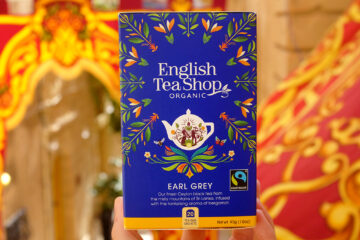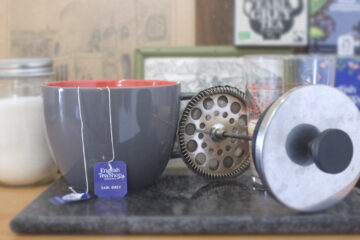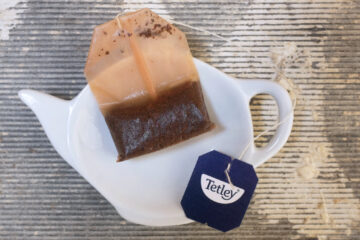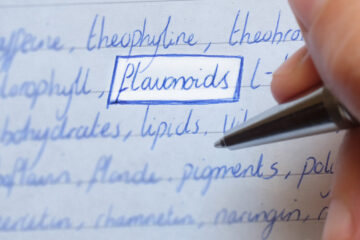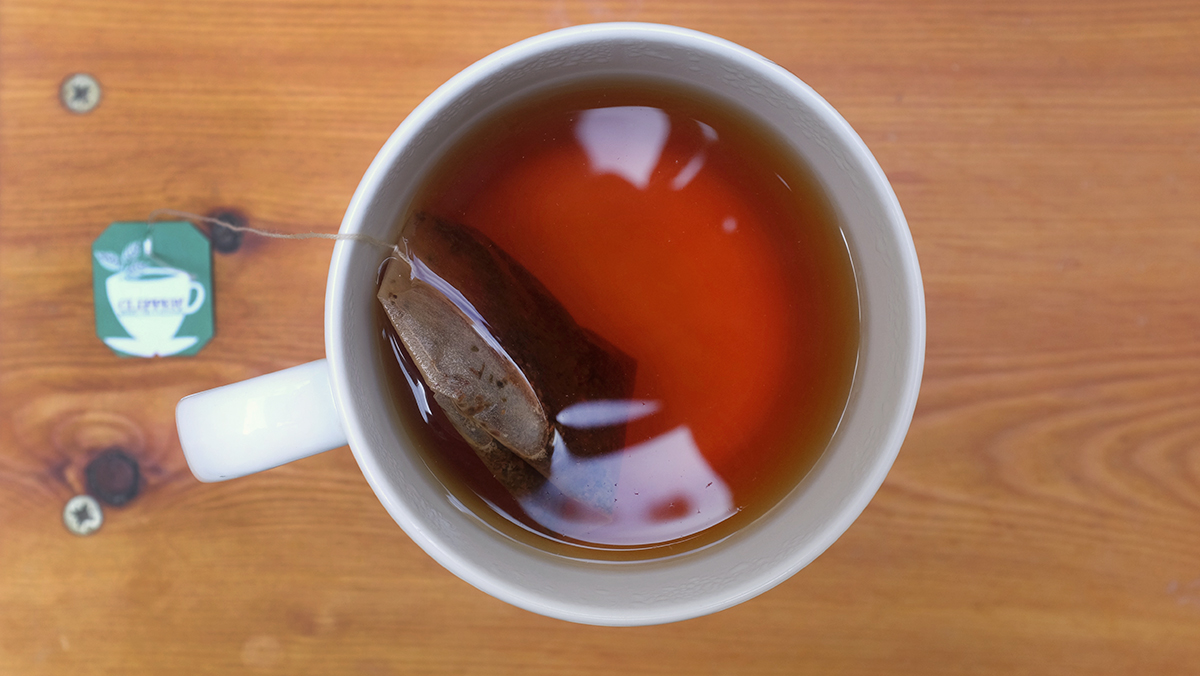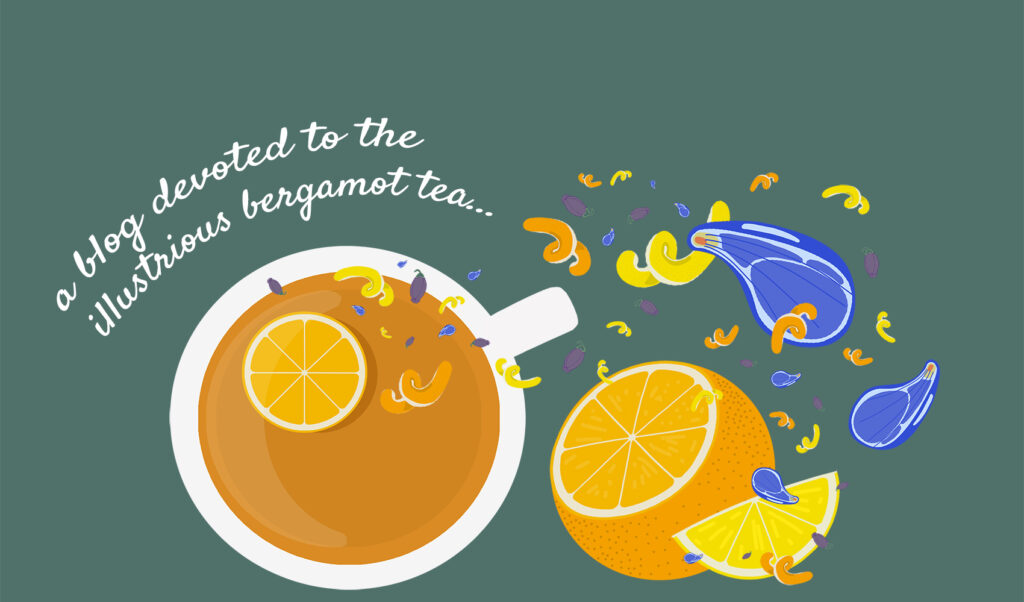Any self-respecting tea drinker worth their salt has heard of Earl Grey tea. But, have you ever stared down into your cup and wondered how it came to be?
Rich in history, prestige, and notoriety, the tale of this classic British tea is shrouded in intrigue and mystery.
Was it a diplomatic gift, a tasty flavourant, or a simple case of serendipity?
Let’s delve deeper into this curious bergamot blend and see if we can uncover the true origins of Earl Grey tea.
Table of Contents
- Diplomatic Ties
- Trade Monopoly
- A Different Shade of Grey
- Limey Cover-up
- A Case of Serendipity
- Unanswered Questions
Diplomatic Ties
The most common story centres around Charles Grey, the Second Earl Grey (1764-1845). Also known as Viscount Howick, the Second Earl Grey was the UK Prime Minister from November 1830 to July 1834.
Legend has it that the Earl saved the life of a Chinese man’s son while aboard an envoy to China. As a reward, the Mandarin man gifted Charles Grey with the infamous bergamot tea recipe. And the rest, as they say, is history.
It’s the most convenient option given his name, position, and the date of his stewardship. However, his involvement is a bit of a, well, grey area – excuse the pun.
Apparently, the Earl liked the tea so much that he asked his tea dealer (unnamed) to recreate it in his name. And thus, Earl Grey tea, as we know it, was born.
But, there’s little to no evidence to back up this claim. Not to mention that it’s highly unlikely that the Earl ever visited China. After all, the two countries weren’t on the best of terms.
Then there’s the bergamot fruit itself, which is primarily grown in the province of Reggio di Calabria in Italy, not China!
There’s also some debate as to whether this Chinese Mandarin man was a nobleman, dignitary, or teamaker. Given the other holes in this story, however, I guess it doesn’t entirely matter.
Other contradictory accounts of the story exist. Some claiming it was, in fact, one of the Earl’s employees. Who, while in service to the Earl, did the good deed. Ergo, it was the Earl by proxy.
This version of events is a little more plausible. And, it was later backed up by one of the Earl’s ancestors in a 1994 interview with the Daily Telegraph. Albeit more of an anecdote than a reliable history of Earl Grey tea with documents to back it up.
During his period as Prime Minister, the Earl Grey sent an envoy to China, who supposedly saved the life of a mandarin’s son. In gratitude, the mandarin shipped a special blend of tea, plus the recipe to make it. Earl Grey must have taken the tea and purported recipe to his tea merchant and asked him to copy it.
Food of England – Originally from the Daily Telegraph
1994 is also when Lady Grey tea was first marketed and sold. So, perhaps it was simply a marketing ploy by Twinings, who owns the Lady Grey trademark.
Trade Monopoly
Another theory is that the citrus flavoured tea was a gift to the Earl after ending the trade monopoly between Britain and China (originally held by the East India Company) thanks to the 1832 Reform Act.
However, this is also disputed with the East Indian Company, which claim that they were the first to introduce the orange flavoured black tea to the west.
After a deep dive into their company archives, the East Indian Company found references dating back to 1793, where there was mention of a black tea with citrus extract from China.
He witnessed the Chinese scenting their teas with bitter orange blossoms called Neroli.
East Indian Company
This was noted by company botanist Sir George Staunton, who reported it to Sir Joseph Banks, his superior. Sir Joseph Banks then went on to create the Staunton Earl Grey recipe (in the botanist’s honour) after experimenting with different citrus flavours.
The story goes that Sir Joseph Banks, a close friend of Charles Grey, later introduced this delectable concoction to the Earl himself who absolutely loved it.
Of course, this could well be true. Other stories claim that the original recipe for Earl Grey was a gift from China to the Earl, the same place that Sir George Staunton claimed to have first discovered it. It’s also the earliest recorded mention of anything like Earl Grey tea.
But, their story fails to mention why Sir Joseph Banks decided to name the tea Staunton Earl Grey, after his friend, and not just Staunton tea.
Furthermore, according to the Twinings of London, the Prime Minister sold the recipe to Richard Twining in 1831. Richard Grey, the Sixth Earl Grey (1939-2013) later cemented Twining’s claim by adding his official signature to the Twinings box in 2011.
It all started in 1831 with Richard Twining who created this iconic blend at the request of Prime Minister Charles Grey, the Earl Grey at the time. He loved this tea and put his name on it.
Twinings Tea
Not to be outdone, Jacksons of Piccadilly (later acquired by Twinings during the 1990s) has also staked a claim. Stating in an advert from 1926, that they invented the Earl Grey blend at the request of Charles Grey in 1836.
A Different Shade of Grey
Controversially, some tea enthusiasts argue that the tea’s invention may not have anything to do with either Earl at all. But, instead, a tradesman by the name of William Grey.
The William Grey & Co. Red Canister Tea Warehouse was based in Morpeth, Northumberland. That’s just a couple of miles away from the Earl Grey’s Howick Hall home.
The now-defunct William Grey & Co. regularly advertised their ‘Celebrated Grey Mixture Tea’ in the Morpeth Herald. The earliest of which dates back to at least 1852 with the accompanying rhyme:
If your pockets and palates you both want to please,
Buy William Grey’s finest of Teas,
His, at Four Shillings, is unequale’d they say,
Then come with your money, and purchase of Grey.
Country Life – Originally from the Morpeth Herald
After going out of business, Charlton & Co. supposedly continued production of the original William Grey recipe. Evidence of this can be found in an advert from the periodical John Bull, 1867.
This is backed up by an investigation by the Oxford English Dictionary (OED) in 2012, which states that there was, again, mention of a ‘Celebrated Earl Grey’s Mixture’ in The Morning Post, 1884. This time, by tea makers Charlton and Co. and with the adage of ‘Earl’, making it the first printed mention of ‘Earl Grey tea’.
Was this how Earl Grey tea got its name? It’s thought that the ‘Earl’ part was added later to make it sound grander and appeal to the upper-class. Perhaps it was simply a way to piggyback off the tea maker’s proximity to the Earl Grey Howick Hall home.
It costs five shillings and four-pence a pound and was for a long while known as “Earl Grey’s Mixture,” this nobleman having recommended this particular mixture to Her Majesty.
The Marquise de Fontenoy’s Revelation of High Life Within Royal Palaces (Page 42)
In 1892, the ‘Earl Grey Mixture’ gets another official mention in The Marquise de Fontenoy book, ‘Revelation of High Life Within Royal Palaces’. A possible work of fiction, but it offers a glimpse into the popularity of the tea at the time.
It’s also worth noting, that the use of the term ‘Earl Grey Mixture’, which was coined by Charlton and Co. This may add weight to the William Grey sequence of events.
Limey Cover-up
Yet another story involving the Second Earl Grey describes how his family estate in Northumberland had a problem with limescale. This gave the water sourced from the well a terrible, unpleasant, chalky mouth-feel.
Howick Hall Manor, claims that the bergamot tea blend was created by a Chinese Mandarin man to cover up the undesirable lime taste.
It’s thought that the now infamous Earl Grey tea recipe later came into circulation at the hands of the extremely sociable Lady Grey.
Known for her lavish tea parties, Lady Grey was said to have served a variety of guests the tea concoction at both her London and Northumberland residences. So, it stands to reason that the citrus blend became famous across the country. And, how it earned its reputation as a tea for the upper-class.
A similar hypothesis suggests that bergamot oil was used to enhance the flavour of bad quality teas – similar to how Crème de cassis is used for poor-tasting wine.
A Case of Serendipity
A less popular theory is that Earl Grey tea was discovered by accident. The story goes that there was a cargo ship transporting both black tea leaves and bergamot oranges to England. During the long journey, the tea somehow became infused with the bitter citrus flavour. And that is how Earl Grey tea was invented.
However, there’s little to no evidence to back this up. Nor are there any specific dates, names, or other details to substantiate this claim. Not to mention, how did this tea get the name, Earl Grey?
Unanswered Questions
Unfortunately, we may never know the true history of Earl Grey tea. With scattered accounts of he said she said, untrademarked recipes, and multiple teamakers claiming it to be their own invention, it’s difficult to decipher fact from fiction.
Then there’s the notorious 1994 Telegraph interview with the Sixth Earl Grey, who throws into question which Earl Grey was the tea named after. The First Earl Grey (1729-1807) or the Second Earl Grey (1764-1845)?
Unfortunately, we don’t know who the first Earl Grey’s tea merchant was and we don’t know what the original blend tasted like.
Food of England – Originally from the Daily Telegraph
To further stir the pot, there’s even some mention of the tea being named after Henry Grey, the Third Earl Grey (1802-1845). And, it’s entirely possible it wasn’t named after an Earl at all!
While we may have failed to crack the case of who invented Earl Grey tea, it’s certainly been fun learning about the tasty history of this delightful bergamot blend.


